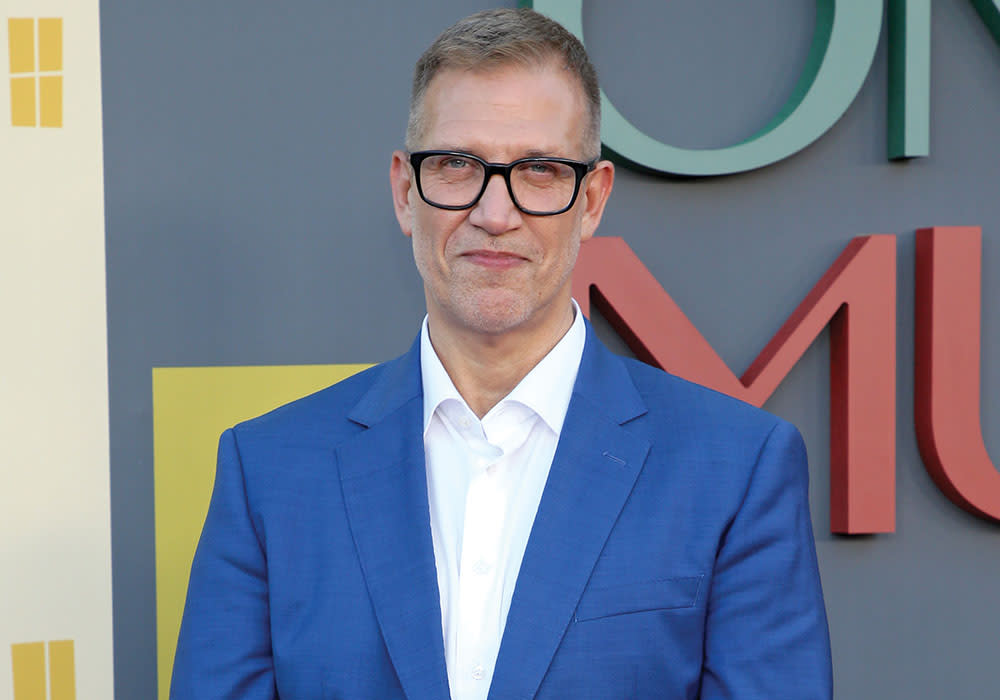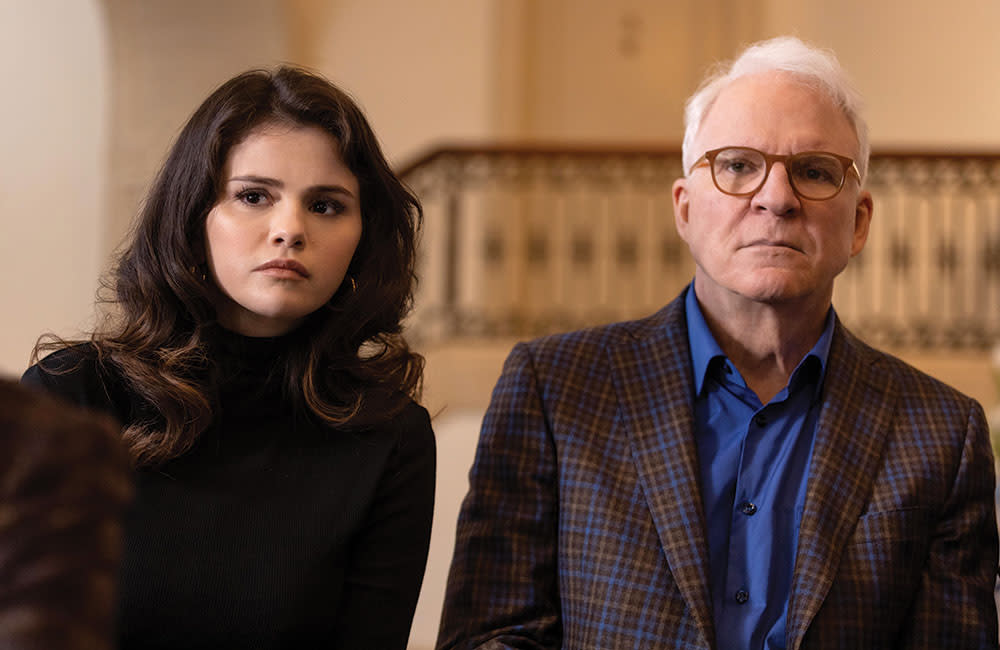‘Only Murders in the Building’ Showrunner Explains How He and Steve Martin Found Humor in the Murder Mystery

Even after the intricate behind-the-scenes planning — from crafting an appropriately dense and twisty murder mystery to mapping out character arcs and dynamics for stars Steve Martin, Martin Short and Selena Gomez that were complex and funny — that went into Hulu’s Only Murders in the Building, showrunner John Hoffman recognized that he must remain on the lookout for in-the-moment inspiration.
He recalls pitching Martin, 75, a bit of challenging physical comedy in the 10th episode of the debut season. With an expectation that there might be limits to his enthusiasm, he was surprised and delighted when his series co-creator immediately declared he was all in, offering a fresh blast of ideas for additional flourishes, in the same vein as the sublimely manic bits of business that distinguished his earliest works.
More from The Hollywood Reporter
“He starts showing me various things he could do and play with, and I’m like, ‘What more could you ask for?’ ” Hoffman marvels. After the first season amassed a devoted fan base, critics’ raves and 17 Emmy nominations, Hoffman is especially gratified to add a late-career payoff to the tremendous amount of goodwill Martin has generated during his career. “He told me recently, just dancing around the room, he would never have expected such a delightful thing,” says Hoffman. “He said, ‘My career hasn’t had the mix of a warm, critical reception with a popular reception like this all at once. My movies get appreciated 20 years later.’ I hadn’t thought of that … I find it incredibly moving that he dove in with everybody in that spirit to lead the way.”

Steve Martin is a hero of yours. What was intriguing about how the two of you jelled as you worked together?
I was able to quickly move past all of the intimidating factors of that, what would be completely thwarting to a creative mind, like, “How am I going to make all those people happy and see the way I want this thing to go?” I had these talks with Steve about elevating the material beyond what could be really funny about it and finding the humanity at the core of it. I remember the big moment that I went to dinner at Steve’s apartment at the San Remo in New York. I was intimidated: Marty was there, and I talked to them and played them this video that I had found accompanied by “Clair de Lune,” where this incredible dancer was performing with a trampoline and bouncing up and down. After dinner, I pulled my laptop over and I watched them watch this whole piece. I said, “This idea plays to the true art of the clown, but there’s pathos, there’s poignancy involved in it.” It’s what they’ve been doing all of their careers, if you are really honest about it: elevating the art form. There’s some leap, there’s some sweet sort of note to it that makes us appreciate the quote-unquote fool that they’ve been for us for so many years. I was pitching to them about what this bounceback might be in our episode one. They had to take a moment. Like, “Wait a minute — so this is going in the show?” And I said, “Yes. It’s indicative of where we want to hit emotionally at the core of these characters, and boom — we pull it off.” They were embracing of it. I’m very proud of that moment because it does leap, and it sends very clearly the signal: This is not the show you expect.
Tell me about figuring out the arcs of the characters and developing a clever murder mystery while also determining the comedy beats and tonal shifts.
It’s easy to minimize what we’re doing with this half-hour comedy. Steve is a great mystery aficionado, and I was not, and so I knew that I had a huge task here, and we were keeping a lot of balls in the air. But that thrilled me. That felt all of a piece to me, that you could puzzle this all together and hold it, and you’d be finding great relief and delight in the in-their-bones comedy between the two of these guys while crafting this mystery from backward to forward and twist our way to the end so that we could hopefully satisfy the people who are there for that mystery, the true crimers or whoever likes a good yarn. I had been through a rather personal experience with a dear friend of mine from childhood who was found murdered a year before I started developing this show. And, because I had been disconnected from him, I had spent that year investigating it in a way that I never would’ve done. I went to Wisconsin, met his family, had to understand what led to this moment. I was obsessed with it, and I’d never had that experience, but I wanted that to infuse this as well. It’s all in balance with the comedy, with the human trio coming together and finding connection out of great loneliness and isolation.
Steve and Marty form two of the all-time great comedy sparring partners. How did Selena fit into that mix, and how did you craft that alchemy with these three performers?
“Alchemy” is the perfect word. You can only do so much as a writer to create the thing. The essential magic that occurred that none of us knew to expect, or would’ve dreamed to expect as well as it works, is when Selena Gomez [came in]. We had a table read Zoom, the first time that we heard the three of them together reading these lines, two weeks before we started shooting, and it was like, “OK, here’s the show that’s going to happen.” She had her own comedic stylings that were very well-honed and shrewd. She came with beautiful understanding of the backstory of Mabel and the growing care that a millennial like her would have when confronted with these two uncle-like crazy people. After that Zoom, we all hung up, and the phone line started lighting up: Steve and Marty called and they were like, “She’s perfect.” They both were unsettled in the right way as characters and made off-balance by her.

How did you land on the comedy zone you were going to operate in?
The organizing principle in my mind for the tone and the comedy in this show is “New York City.” New York holds it all: You can have something hugely dramatic happening when you step outside of your building in New York that’s upsetting and deeply concerning, and you have people grabbing onto each other that you never even knew before who are experiencing something as a unit. Once we squared on the tone of the show as New York City, you could have your cake and eat it too with these comedic geniuses. What if the cat is in the freezer? You can play a scene with Steve Martin discovering a cat in the freezer and having to pull it out and one of the legs snaps off and now he’s putting it in his pocket. But that scene has to be married with something deeply grounding: He then encounters Oliver in a very low moment where he’s going to sell the valuable poster of his hugest failure on Broadway. It’s absurdist, but both things are being held at once. It all has to be in good measure and give the audience what they want, but it has to be organically true to the narrative we’re building. That’s the joy of this show: It can go a lot of different directions, and you never know where it’s going to go from one moment to the next.
Interview edited for length and clarity.
This story first appeared in an August stand-alone issue of The Hollywood Reporter magazine.
Best of The Hollywood Reporter
